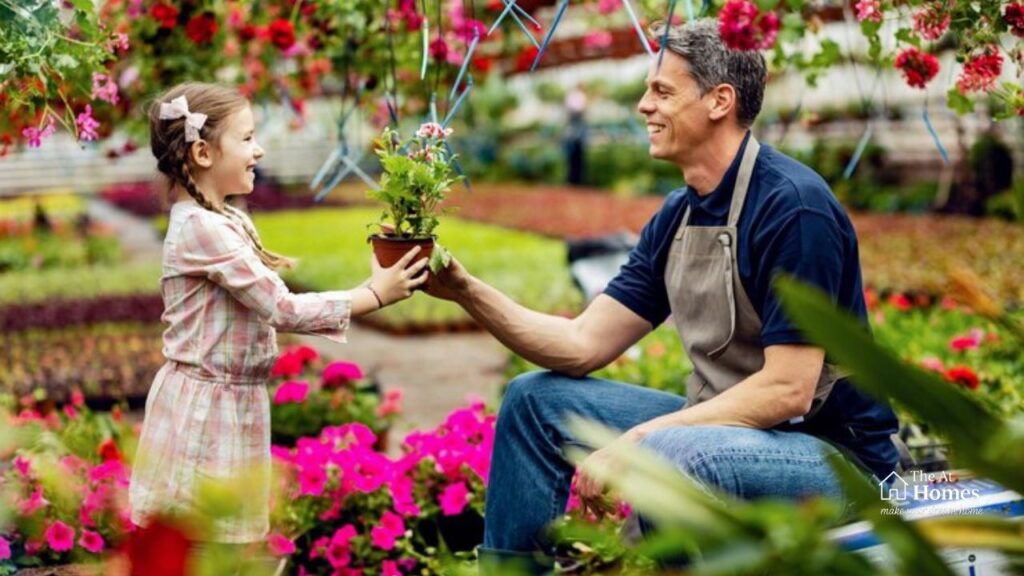Gardening is a timeless activity that connects people with nature, fosters creativity, and provides countless opportunities for learning and bonding. For families, gardening can be both a fun pastime and an educational experience that brings everyone closer together. Whether you have a sprawling backyard or a compact urban balcony, there are numerous family-friendly gardening ideas that not only thrive in a variety of environments but also engage kids and adults alike.

1. Create a Sensory Garden
A sensory garden is designed to stimulate all five senses—sight, smell, touch, taste, and sound. It’s perfect for young children who are still exploring the world around them. Include brightly colored flowers like marigolds or zinnias, fragrant herbs such as lavender and mint, soft foliage like lamb’s ear, edible plants like cherry tomatoes and strawberries, and ornamental grasses or wind chimes to provide soothing sounds. Sensory gardens not only beautify your space but also encourage mindfulness and exploration.
2. Start a Vegetable Patch
Growing vegetables is a rewarding experience for the whole family. It teaches kids where their food comes from and instills a sense of responsibility. Start with easy-to-grow vegetables like carrots, lettuce, radishes, and beans. Involving children in planting, watering, and harvesting promotes patience and teamwork. Raised beds or container gardening make maintenance easier and can be adapted to any outdoor space. For added excitement, try themed gardens such as a “pizza garden” with tomatoes, basil, and peppers.
3. Introduce Pollinator-Friendly Plants
Pollinator gardens attract bees, butterflies, and birds, supporting biodiversity and offering a natural learning opportunity. Choose native plants like coneflowers, black-eyed Susans, and milkweed, which are low-maintenance and thrive in most climates. Watching butterflies flit from flower to flower or bees buzz around the garden can captivate children and inspire curiosity about the natural world. These gardens not only help the environment but also add color and life to your outdoor area.
4. Create a Fairy or Gnome Garden
Whimsical gardens designed with miniature furniture, small houses, and tiny pathways spark imagination and storytelling. Kids love creating and arranging their own enchanted spaces using stones, moss, and small plants like succulents or creeping thyme. These gardens can be set up in containers or tucked into a corner of your yard, providing an ever-evolving project for children of all ages.
5. Make Gardening a Game
Turn chores into challenges by turning watering, weeding, and harvesting into games. Use scavenger hunts, bingo cards, or gardening journals to keep kids engaged. Not only does this add fun to routine tasks, but it also reinforces responsibility and observation skills. Use colorful tools and gloves designed for kids to make them feel like true gardeners.
6. Ensure Proper Drainage
Good drainage is key to a thriving garden. Poorly drained soil can lead to root rot and plant failure, frustrating even the most enthusiastic families. Whether you’re planting in raised beds, containers, or traditional garden plots, ensuring water flows properly is crucial. One way to manage water effectively is by using NDS drainage products, which help direct excess moisture away from plant roots and keep your garden healthy year-round.
7. Compost Together
Composting teaches valuable lessons about recycling and sustainability. Set up a compost bin in your backyard and involve kids in collecting kitchen scraps like fruit peels, coffee grounds, and eggshells. They’ll be amazed to see how waste turns into nutrient-rich soil. Over time, this practice not only reduces household waste but also boosts your garden’s health.
Family-friendly gardening is more than just planting seeds—it’s about nurturing relationships, learning together, and growing as a unit. With the right combination of creativity, practicality, and engagement, your garden can become a source of joy and enrichment for years to come. Whether it’s watching a sunflower bloom or harvesting your first tomato, the memories you create in the garden will flourish alongside your plants.

